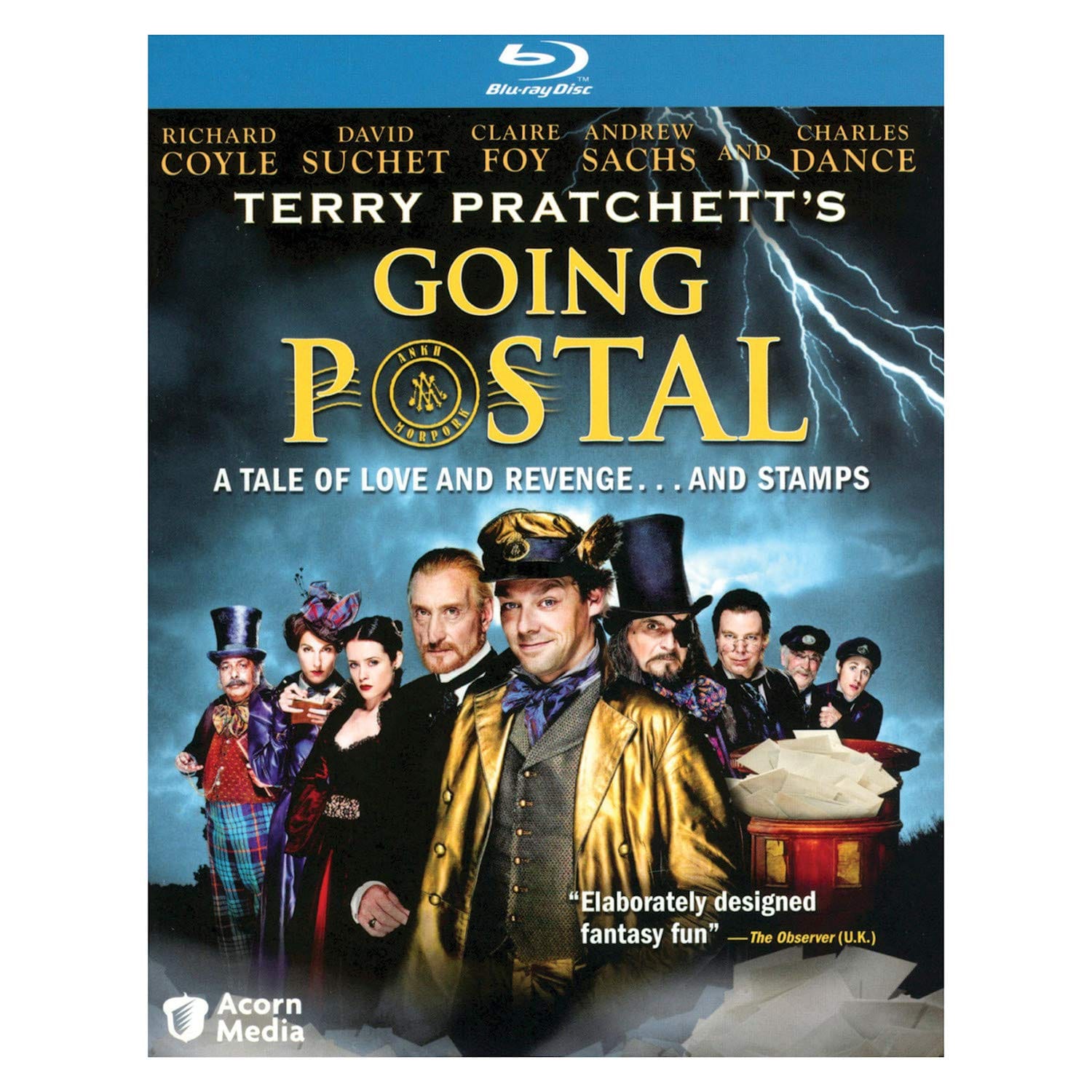"[Moist von Lipwig:]
'I wish I were
a better man.'
[Adora Belle Dearheart:]
'You're a man
with a vision.
Maybe that
counts as better.'"
– in Terry Pratchett's Going Postal, Eposode I.
The point for innovation
I'm not sure what's more bizarre:
How much innovation advice takes it as a given that you already have a great vision or purpose ... or how hard it is actually to come up with such a vision.
Now, I'm talking "lower case v" vision here. Vision, purpose, agenda, mandate, any and all of them, writ large. I simply mean the answer to a seemingly-simple question:
"What's the point of all your work? To what end are you doing it?"
Anyone who has never had to come up with–and then defend–a vision for innovation would be forgiven to be puzzled: How hard can this be? Existing companies already have a company-wide vision. Add in scores of professionals who can sift through the latest trends, analyze the competitive battlefield, or cook up new scientific or creative inventions ... isn't it obvious?
The unfortunate reality is that coming up with a mandate for innovation work is absurdly hard!
Often, innovators start from scratch because their organization can't offer them any useful starting point:
Sometimes, the organization has no vision at all, or it was implicit, never questioned, and never spelt out: An organization simply always did things the same way. Everybody understood it. And if they didn't, there were always executives who can make a decision, so that everyone can move on.
Other times, the org has a vision, but it's useless–a platitude, or a mandate that is as impossible to attain as it is impossible even to define. One of the worst with which I was ever personally involved was "Be the Best Company Ever." For one thing, any even marginally self-reflective employee knew that we were not the best and not within a reasonable distance of getting there. For another thing, "best" was such a hazy goal that it could mean a million different things, by team member, and even day by day for any one of us. A few people even took the cynical road out and said: "Well, we're better than yesterday. So we're the best we've ever been. Mission accomplished." So, useless visions (or at least ones that are useless for the specific needs of innovation efforts) can be a problem.
And finally, some organizations have too many visions. Either it's a strategic problem, caused by some top-heavy but poorly implemented structure of vision--mission--values--brand--goals--objectives--OKRs--initiatives, combined with competing versions, e.g., for marketing (brand vision--positioning--ambition--pillars--proof points--markets), HR (employment brand house), Product (product vision--strategy--roadmap--releases) and on and on, all connected with little more than some painful combination of politics and politeness. Choosing any starting point becomes an exercise in frustration.
And even if innovators do come up with a vision, they still have to sell it, causing more pain 🤯:
Visions' highly abstract nature is one common cause for trouble. Many stakeholders simply aren't used to interpreting such compressed abstract information and understandably struggle with it. Others think they understand it but interpret it in different ways. Yet others disagree on details but, unproductively, decide to challenge the entire edifice over some nit. Or maybe the effort "feels" like it takes too long, and people get antsy. Maybe people want the vision expressed in the form of a "temple" rather than a "house" framework.... I'll spare you yet more examples. Just to say: It's hard to get people to agree.
In one organization with which I was involved, it took four years and three initiatives, each different from the prior one, just to get agreement on acting on a vision to which people had already agreed in concept the first time!
Which brings us back to Moist von Lipwig. Having a vision, one that one can express and act on is hard enough that it just might make one a "better man" for having one!
How to act on this
This time, the "action" part of this is almost a trick answer:
Yes, we will cover ways for setting good innovation visions as part of the innovation governance research I am doing right now (as you can, e.g., see in my WIP research journal). More to come. I will put a link here once it's done.
But as a starting point, you simply need to be 120% aware that setting an innovation vision or purpose is much harder than it seems at first.
It's hard. Period.
Is that what "one" should say in blog posts that somehow magically end in a sweet and straightforward answer? Maybe not. But that's the honest takeaway.
If you have an innovation vision that's truly fantastic, count yourself lucky.
Otherwise, it's worth the work to find one. Just know that it'll take real effort.
Source

Terry Pratchett's Going Postal
by Terry Pratchett (screenplay by Richard Kurti and Bev Doyle)
Sky 1 (2010)
Further reading
The novel on which the show is based: Pratchett, T. (2004). Going Postal. Doubleday UK. http://books.google.com/books?id=yi9AAQAAIAAJ&hl=&source=gbs_api
The show in which I actually found the quote: Pratchett, T. (2010). Terry Pratchett’s Going Postal: A Tale of Love and Revenge … and Stamps : Sky 1. Retrieved 2024-02-10 from https://sky1.sky.com/going-postal


